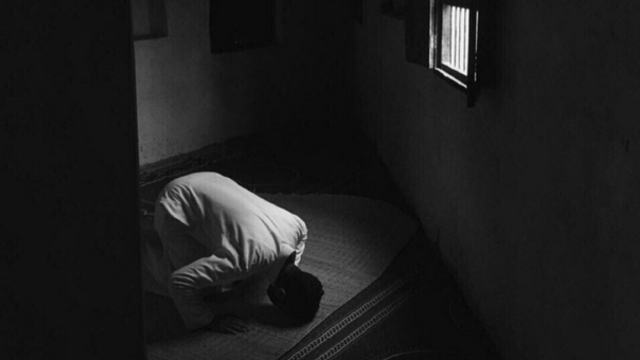Article R.511-13 of the Education Code states that:
“I In colleges and high schools under the authority of the Minister of Education, the sanctions that can be imposed on students are as follows: 1° Warning; 2° Reprimand; 3° Accountability measure; 4° Temporary exclusion from class. During the sanction, the student is accommodated in the institution. The duration of this exclusion may not exceed eight days; 5° Temporary exclusion from the institution or one of its ancillary services. The duration of this exclusion may not exceed eight days; 6° Permanent exclusion from the institution or one of its ancillary services.
The sanctions provided for in 3° to 6° may be accompanied by a suspended sentence, the terms of which are defined in Article R. 511-13-1. (…) sanctions, even if accompanied by a suspended sentence, are recorded in the student’s administrative file. The warning is erased from the student’s administrative file at the end of the school year. The reprimand and the accountability measure are erased from the student’s administrative file at the end of the school year following the one in which the sanction was pronounced. Other sanctions, except for permanent exclusion, are erased from the student’s administrative file at the end of the second school year following the one in which the sanction was pronounced. However, a student may request the erasure of sanctions recorded in their administrative file when changing institutions. Sanctions are erased from the student’s administrative file at the end of their secondary education.”
The accountability measure consists of participating, outside of teaching hours, in solidarity, cultural, or training activities for educational purposes. Its duration may not exceed twenty hours.
Implementation of a dialogue
Implementation of a preliminary dialogue within the framework of Law No. 2004-228 of March 15, 2004 governing, in application of the principle of secularism, the wearing of signs or attire manifesting a religious affiliation in public schools, colleges, and high schools:
The implementation of a disciplinary procedure is mandatory preceded by a dialogue with the student and parents (Article L. 141-5-1 of the Education Code).
Regarding the wearing of signs manifesting a religious affiliation, according to the circular of May 18, 2004, relating to the implementation of Law No. 2004-228 of March 15, 2004, “the dialogue should be pursued for as long as necessary to ensure that the disciplinary procedure is only used to sanction a deliberate refusal by the student to comply with the law”.
The dialogue will be initiated by the head of the institution or the National Education inspectorate. The student will then be questioned about their representations, motivations, knowledge of the internal regulations and their meaning.
Cases where disciplinary procedure is automatic
The initiation of disciplinary proceedings is automatic in the following cases:
- when the student is the perpetrator of verbal violence against a staff member of the institution;
- when the student commits a serious act against a staff member or another student;
- when a staff member of the institution has been the victim of physical violence.
Other situations are left to the discretion of the head of the institution.
Scale of sanctions that can be imposed on students (Art. R511-13 of the National Education Code):
- Warning;
- Reprimand;
- Accountability measure;
- Temporary exclusion from class. It cannot exceed eight days;
- Temporary exclusion from the institution or one of its ancillary services. It cannot exceed eight days;
- Permanent exclusion from the institution or one of its ancillary services.
- Sanctions 1° to 5° can be taken by the head of the institution alone without referring to the disciplinary board.
- Permanent exclusion from the institution is necessarily decided by the disciplinary board.
A permanent exclusion can seriously infringe on the right to education as protected by Article 2 of Additional Protocol No. 1 of the Convention for the Protection of Human Rights and Fundamental Freedoms, the 13th paragraph of the Preamble to the Constitution of October 27, 1946, as well as Articles L. 111-1, L. 141-1 and L. 141-2 of the Education Code.
Article D. 511-43 of the Education Code stipulates that when a permanent exclusion sanction is pronounced against a student subject to compulsory schooling, the rector or the academic director of the National Education services immediately provides for enrollment in another establishment or in a public center for correspondence education.
General Principles of Applicable Law
- The principle of legality of offenses and sanctions: the internal regulations of the establishment must mention the offenses and sanctions (art. R511-13 of the Education Code);
- The rule of “non bis in idem” according to which a student cannot be subject to multiple sanctions for the same act;
- The principle of proportionality: the sanction must be graduated according to the severity of the breach of the rule.
- The principle of individualization: any sanction is addressed to a specific student in a given situation, there can be no collective sanction.
- The obligation to provide reasons for the decision pronounced by the head of the establishment or the disciplinary board, which must be written and include clear and precise reasoning.
- The implementation of a disciplinary procedure must respect the adversarial principle, that is to say, allow the student in question to present written or oral observations upon request, to be assisted or represented.
Failure to respect these principles may justify the exercise of appeals against the decision rendered (see decision of the Defender of Rights No. 2019-164).
Procedure
- The head of the establishment immediately informs the student of the facts they are accused of and the time they have to present their defense orally or in writing or by being assisted by a person of their choice. If the disciplinary decision is taken by the head of the establishment alone, this period is at least two (2) working days (art. R421-10-1 Education Code).
- In case of referral to the disciplinary board, the head of the establishment summons by registered letter or hand delivery against signature, at least five (5) days before the session, for which he sets the date (art. D511-31 Education Code):
- The student in question;
- If they are a minor, their legal representative;
- The person possibly charged with assisting the student in presenting their defense.
He summons by any means, including by fax or email, at least five (5) days before the session, the members of the disciplinary board as well as:
- The person who requested the head of the establishment for the student’s appearance;
- Witnesses or persons and, if they are minors, their legal representative, likely to inform the disciplinary board about the facts motivating the student’s appearance.
- The student, their legal representative, and the person possibly charged with assisting them in presenting their defense can review the file with the head of the establishment, notably by requesting communication of the incident report, by phone and by registered letter with acknowledgment of receipt, before the disciplinary board.
- The student’s legal representative and, if applicable, the person charged with assisting them are informed of their right to be heard, upon their request, by the head of the establishment and by the disciplinary board (art. D511-32 Education Code).
In public colleges and high schools, the student automatically has the right to be assisted by a lawyer during their appearance before the disciplinary board, which may not necessarily be the case in private establishments, as the rules are set by the internal regulations.
- If necessary, the head of the establishment can, as a precautionary measure, prohibit a student from accessing the establishment for a period of two (2) working days when he pronounces the sanction alone or while waiting for the student to appear before the disciplinary board (articles R421-10-1 Education Code and D511-33 Education Code).
Proceedings of the Disciplinary Board Session
- The establishment’s disciplinary board comprises fourteen (14) members (art. R511-20 Education Code):
- The head of the establishment who chairs the board;
- The deputy head of the establishment or, in public local educational establishments, if applicable, the deputy designated by the head of the establishment in case of multiple deputies, who chairs the board in the absence of the head of the establishment;
- A lead education advisor designated by the board of directors, upon proposal by the head of the institution;
- The institution’s administrator;
- Five staff representatives including four representatives of teaching and education staff and one representative of administrative, social and health, technical, worker and service staff;
- Three parent representatives in middle schools and two in high schools;
- Two student representatives in middle schools and three in high schools.
- The president reads the report motivating the proposed sanction.
- The disciplinary board hears the student and, upon request, their legal representative and the person responsible for assisting the student. It also hears:
- Two teachers from the class of the student in question, designated by the head of the institution who may consult the teaching team for this purpose;
- The two student delegates from the class of the student in question;
- Any person from the institution likely to provide information about the student that may inform the discussions;
- Other persons summoned by the head of the institution (the person who requested the student’s appearance, witnesses, etc.) and, if they are minors, in the presence of their legal representative.
- Decision of the disciplinary board: the decision of the disciplinary board is made in the presence of only the board members with voting rights. All votes are by secret ballot, by majority of votes cast.
- The president immediately notifies the student and their legal representative of the disciplinary board’s decision. This decision is confirmed by registered mail on the same day. The notification mentions the means and deadlines for appeal.
Appeals
- The decision of the disciplinary board can be appealed to the rector of the academy, within a period of eight (8) days from its written notification.
- The rector of the academy decides, after advice from an academic commission, to confirm or annul the decision of the disciplinary board.
- It is then possible to file a contentious appeal against this new decision of the rector of the academy before the administrative court within two (2) months.
- When the sanction has been taken by the head of the institution alone, an administrative appeal is possible against the decision taken within a period of two (2) months from the notification: either to the head of the institution himself (gracious appeal) or to the rector (hierarchical appeal). It is possible to directly refer to the administrative court (appeal for excess of power).
- If you are deprived of schooling, it is possible to resort to the summary procedure by demonstrating the urgency of the situation. The procedure of Article L.521-2 of the Administrative Justice Code provides that “seized of a request to this effect justified by urgency, the judge (…) may order all measures necessary to safeguard a fundamental freedom to which a public law entity (…) would have, in the exercise of one of its powers, committed a serious and manifestly illegal infringement”. The judge decides within 48 hours.
- A student may request the erasure of sanctions recorded in their administrative file when they change institutions.
- Sanctions are erased from the student’s administrative file at the end of their secondary education.
- In case of difficulties, you can refer to the Rights Defender.
- Finally, you can contact Equitas for support.




